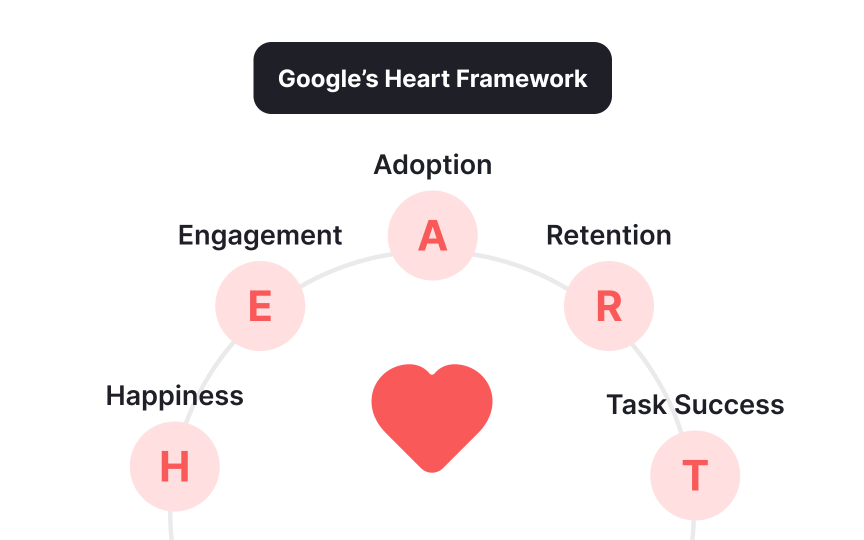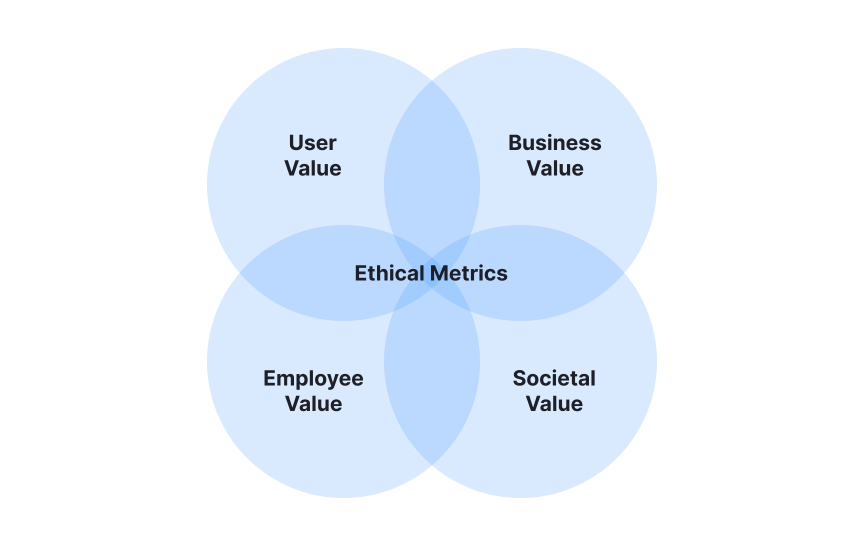Dark Patterns and the Importance of Guardrail Metrics
Balance optimization goals with protective guardrail metrics to prevent dark patterns and build sustainable products
Metrics drive behavior, but the wrong metrics can steer product development toward harmful practices. Dark patterns emerge when teams optimize for singular metrics like revenue without considering the broader user experience. Guardrail metrics act as essential counterbalances that prevent this optimization tunnel vision. They function as early warning systems that flag when the pursuit of primary metrics leads to user manipulation or experience degradation. Understanding how to implement these protective metrics ensures your OKRs drive genuine product improvement rather than short-term gains at users' expense.
Guardrail metrics become particularly important during experimentation phases, where focusing solely on conversion improvements might hide emerging issues in retention, trust, or satisfaction. By establishing these guardrails, product teams can maintain ethical boundaries while pursuing growth, creating sustainable products that users genuinely value rather than those that merely extract value through deceptive practices.
Dark patterns are deceptive user interface designs that trick users into making unintended decisions, often benefiting the business at the user's expense. These manipulative designs appear in various forms, from hidden costs that only reveal themselves at checkout to forced continuity subscriptions that are difficult to cancel. Misdirection techniques deliberately focus users' attention on one thing to distract from another, while confirmshaming uses guilt-inducing language to discourage certain actions. Such patterns frequently emerge when teams are incentivized to optimize for singular metrics like conversion rates or sign-ups without considering the broader impact.[1] Research shows that 11% shopping websites employ at least one
While dark patterns might temporarily boost metrics, they ultimately damage user trust and brand reputation. Recognizing these patterns is the first step toward building ethical products that genuinely serve users rather than exploit them.
Even well-intentioned metrics can lead to detrimental behaviors when they become the sole focus of product teams. This phenomenon, known as Goodhart's Law, states that "when a measure becomes a target, it ceases to be a good measure."[3] Teams often optimize for what's being measured while neglecting unmeasured aspects of the
These metric-driven distortions happen incrementally and often unintentionally, as teams respond rationally to the incentives placed before them. By understanding this dynamic, product teams can implement more thoughtful measurement frameworks that capture the full spectrum of value creation.
Regularly ask your team: "If we were to optimize exclusively for our current metrics, what negative behaviors might emerge?" Use these insights to refine your measurement approach.
Guardrail metrics establish boundaries that prevent optimization of primary metrics from harming the overall
Effective guardrail metrics directly measure user-perceived quality rather than business outcomes. They act as leading indicators that reveal problems before they impact
Pro Tip: Review your product's negative reviews and support tickets to identify the most common user complaints. These often make excellent guardrail metrics that prevent experience degradation.
Effectively communicating the value of guardrail metrics to stakeholders requires connecting them to long-term business outcomes rather than presenting them as constraints. This involves demonstrating how guardrail metrics protect
When introducing guardrail metrics, begin with concrete examples of how single-metric optimization has led to negative outcomes like
Visual storytelling significantly enhances stakeholder understanding. Use before-and-after comparisons of products that implemented
Pro Tip: Frame guardrail metrics as "insurance policies" against reputational damage and regulatory risks when presenting to executives. Example: "Our satisfaction guardrails protect us from the churn increase that Company X experienced."
Guardrail metrics also function as early warning systems that detect negative impacts before they cause significant damage to the
Effective early warning metrics typically measure intermediate steps in the user journey rather than final outcomes. For example, a decrease in feature usage frequency might precede a drop in overall engagement. Similarly, an increase in help documentation views could signal usability issues before users abandon the product entirely. Changes in session duration, click patterns, or search behaviors often reveal emerging problems in the user experience.
Implementing these metrics requires establishing a baseline for normal behavior and setting appropriate thresholds for alerts. Teams should define not just the metrics themselves but also the specific action plan when thresholds are crossed. This allows product teams to address issues before they impact key business metrics.
User-centered measurement frameworks prioritize metrics that reflect genuine user value creation rather than simply tracking business outcomes. These frameworks align team incentives with solving user problems instead of exploiting user behavior. They balance quantitative data with qualitative insights to create a holistic view of the
A great example of this is the HEART framework developed by Google provides a structured approach to user-centered measurement. Happiness tracks user satisfaction and perceived value. Engagement measures depth and frequency of interaction with your product. Adoption shows how many users start using new features.
Pro Tip: Regularly validate your metrics with direct user research to ensure they actually reflect user priorities.
Metrics aren't neutral. They reflect values and shape behavior. Ethical metric design starts with a fundamental question: Who benefits from what we're measuring? Teams must consider all stakeholders, users, business, society, and employees, rather than prioritizing business interests alone.
The most common ethical pitfalls emerge when metrics incentivize engagement without considering
Forward-thinking organizations now employ frameworks like consequence scanning, a structured approach to identify potential metric-driven harms before implementation. This proactive stance prevents
Before launching experiments, define clear ethical boundaries and success criteria that include both primary and guardrail metrics. For example, an e-commerce site might require that any conversion-improving changes must maintain or improve ease-of-use ratings and not increase support tickets. This prevents tactics like hiding information that might increase immediate conversions but lead to post-purchase confusion.
Segmentation analysis is particularly important in ethical experimentation. What works for the average user might harm specific segments, so teams should analyze experiment results across different user types and usage patterns.
Create an experiment review checklist that includes testing for accessibility impacts and potential harms to vulnerable user groups. For example, ask "Does this change maintain
References
- The Danger of Dark Patterns (with Infographic) | Toptal® | Toptal Design Blog
- How to Mind Goodhart’s Law | Built In | Built In
- The Wells Fargo Cross-Selling Scandal | The Harvard Law School Forum on Corporate Governance
Topics
From Course
Share
Similar lessons

Sustainability & Ethics in Design Thinking

Ethical & Societal Implications




















